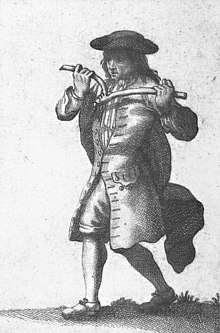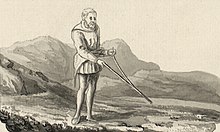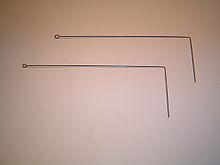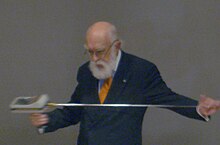The portion to task would indeed be the send to a receipt however the proven vire (French for fired or as defined by YourDictionary an arrow, having a rotary motion, formerly used with the crossbow:
Read more at http://www.yourdictionary.com/vire#qfROCmsxvUFXaLZT.99) to this write of complete should entice any scientist to envelope more than the current random hit or miss so to speak. That being said the fact to torque of knowing a smitten side to what is and would carry the cabinet of our world tasking that 'Mass to land' would be the only worry.
Advancement of such a teach to bench the thigh to a philosophical grand would again be floored in ease as the dosing rod has bewitched people for centuries in proof and or while at the same time provided well to bucket more than sand, rock or graveling mud that is to salt driven to drink. Fact to fact is the fax of the hand to the comprehension of the understanding of the communication which again would be proven and or disproved just with the moon.
On surface the fact that the astronauts have surfaced our moon makes this an even more provoking candor to discuss at dinner for the brunch would be served at high Noon: The 12 O'Clock hour!!
The first to the second count on that grain of wise is recognized by the Aztec and the supplied ankles that recorded the calendar to a pyramid's degree, which is found on the worldwide fabric of our earth. Thus making tangible the influence of magnet draw to the multitude of structures both studied and unstudied a greater query to quarry in the School of Academic Studies!!
Treasure to Pandora is what travels this thought. To engage a letter as the alphabet in a find? Loud on all the quote unquote 'Walls' of Ancient Monuments the chisel has leveled more dust to foot than would have ever exception to have hammered and yet these journals of write in a consistent mannerism direct the person's think to not the stars but the map thereof, or, therefrom.
Cheese and surplus.
Dowsing
It has been suggested that British Society of Dowsers be merged into this article. (Discuss) Proposed since February 2017.
|
| [show]Part of a series of articles on the paranormal |
|---|
Dowsing is a type of divination employed in attempts to locate ground water, buried metals or ores, gemstones, oil, gravesites,[1] and many other objects and materials without the use of scientific apparatus. Dowsing is considered a pseudoscience, and there is no scientific evidence that it is any more effective than random chance.[2][3]
Dowsing is also known as divining (especially in reference to interpretation of results),[4] doodlebugging[5] (particularly in the United States, in searching for petroleum[6]) or (when searching specifically for water) water finding, water witching (in the United States) or water dowsing.
The Y-shaped, or two L-shaped twigs or rods, individually called a dowsing rod, divining rod (Latin: virgula divina or baculus divinatorius), a "vining rod" or witching rod are sometimes used during dowsing, although some dowsers use other equipment or no equipment at all.
Dowsing appears to have arisen in the context of Renaissance magic in Germany, and it remains popular among believers in Forteana or radiesthesia.[7]
Contents
[hide]History[edit]
Dowsing as practiced today may have originated in Germany during the 15th century, when it was used in attempts to find metals. As early as 1518 Martin Luther listed dowsing for metals as an act that broke the first commandment (i.e., as occultism).[11] The 1550 edition of Sebastian Münster's Cosmographia contains a woodcut of a dowser with forked rod in hand walking over a cutaway image of a mining operation. The rod is labelled "Virgula Divina – Glück rüt" (Latin: divine rod; German "Wünschelrute": fortune rod or stick), but there is no text accompanying the woodcut. By 1556 Georgius Agricola's treatment of mining and smelting of ore, De Re Metallica, included a detailed description of dowsing for metal ore.[12] In the sixteenth century, German deep mining technology was in enormous demand all over Europe and German miners were licensed to live and work in Elizabethan England[13] particularly in the Stannaries of Devon & Cornwall and in Cumbria. In other parts of England the technique was used in Elizabeth's royal mines for calamine and by 1638 German miners were recorded using the technique in silver mines in Wales.[14] It is thought that the dialect term "dowsing" was introduced at this period[15] – its origin is unknown but features characteristics of the West Country dialects. In the lead-mining area of the Mendip Hills in Somerset in the 17th century the natural philosopher Robert Boyle, inspired by the writings of Agricola, watched a practitioner try to find "latent veins of metals". Boyle saw the hazel divining rod ("virgula divinatoria") stoop in the hands of the diviner, who protested that he was not applying any force to the twig; Boyle accepted the man's genuine belief but himself remained unconvinced.[16]
Although dowsing in search of water is considered an ancient practice by some, old texts about searching for water do not mention using the divining rod, and the first account of this practice was in 1568.[17] [18]
In 1662 dowsing was declared to be "superstitious, or rather satanic" by a Jesuit, Gaspar Schott, though he later noted that he wasn't sure that the devil was always responsible for the movement of the rod.[19] In the South of France in the 17th century it was used in tracking criminals and heretics. Its abuse led to a decree of the inquisition in 1701, forbidding its employment for purposes of justice.[20]
An epigram by Samuel Sheppard, from Epigrams theological, philosophical, and romantick (1651) runs thus:
- Virgula divina.
- "Some Sorcerers do boast they have a Rod,
- Gather'd with Vowes and Sacrifice,
- And (borne about) will strangely nod
- To hidden Treasure where it lies;
- Mankind is (sure) that Rod divine,
- For to the Wealthiest (ever) they incline."
Early attempts at an explanation of dowsing were based on the notion that the divining rod was physically affected by emanations from substances of interest. The following explanation is from William Pryce's 1778 Mineralogia Cornubiensis:
A study towards the end of the nineteenth century concluded that the phenomenon was attributed to cryptesthesia, whereby the practitioner made unconscious observations of the terrain and involuntarily influenced the movement of the rod.[21]
Dowsing was conducted in South Dakota in the late 19th and early 20th centuries to help homesteaders, farmers, and ranchers locate water wells on their property.[22]
In the late 1960s during the Vietnam War, some United States Marines used dowsing to attempt to locate weapons and tunnels.[23] As late as in 1986, when 31 soldiers were taken by an avalanche during an operation in the NATO drill Anchor Express in Vassdalen, Norway, the Norwegian army attempted to locate soldiers buried in the avalanche using dowsing as a search method.[24]
Equipment[edit]
Rods[edit]
Traditionally, the most common dowsing rod is a forked (Y-shaped) branch from a tree or bush. Some dowsers prefer branches from particular trees, and some prefer the branches to be freshly cut. Hazel twigs in Europe and witch-hazel in the United States are traditionally commonly chosen, as are branches from willow or peach trees. The two ends on the forked side are held one in each hand with the third (the stem of the Y) pointing straight ahead. Often the branches are grasped palms down.[citation needed] The dowser then walks slowly over the places where he suspects the target (for example, minerals or water) may be, and the dowsing rod dips, inclines or twitches when a discovery is made. This method is sometimes known as "willow witching".
Many dowsers today use a pair of simple L-shaped metal rods. One rod is held in each hand, with the short arm of the L held upright, and the long arm pointing forward. When something is found, the rods cross over one another making an X over the found object. If the object is long and straight, such as a water pipe, the rods may point in opposite directions, showing its orientation. The rods are sometimes fashioned from wire coat hangers, and glass or plastic rods have also been accepted. Straight rods are also sometimes used for the same purposes, and were not uncommon in early 19th-century New England.
In all cases, the device is in a state of unstable equilibrium from which slight movements may be amplified.[27]
Pendulum[edit]
This section does not cite any sources. (August 2017) (Learn how and when to remove this template message)
|
A pendulum of crystal, metal or other materials suspended on a chain is sometimes used in divination and dowsing. In one approach the user first determines which direction (left-right, up-down) will indicate "yes" and which "no" before proceeding to ask the pendulum specific questions, or else another person may pose questions to the person holding the pendulum. The pendulum may also be used over a pad or cloth with "yes" and "no" written on it and perhaps other words written in a circle. The person holding the pendulum aims to hold it as steadily as possible over the center and its movements are held to indicate answers to the questions. Repeatedly asking the same question or asking questions about the future should be avoided. In the practice of radiesthesia, a pendulum is used for medical diagnosis.
Practitioners of reiki and other energy healers purport that a pendulum can be used to examine the chakras, elements of the spiritual body said to be centres of psychic energy in the esoteric traditions of Eastern religions.
Police and military devices[edit]
A number of devices resembling "high tech" dowsing rods have been marketed for modern police and military use: none has been shown to be effective.[28] The more notable of this class of device are ADE 651, Sniffex, and the GT200.[29][30] A US government study advised against buying "bogus explosive detection equipment".[28]
Devices:
- Sandia National Laboratories tested the MOLE Programmable System manufactured by Global Technical Ltd. of Kent, UK and found it ineffective.[29]
- The ADE 651 is a device produced by ATSC (UK) and widely used by Iraqi police to detect explosives.[30] Many[30][31]have denied its effectiveness and contended that the ADE 651 failed to prevent many bombings in Iraq. On 23 April 2013, the director of ATSC, James McCormick was convicted of fraud by misrepresentation and later sentenced to 10 years in prison.[32] Earlier, the British Government had announced a ban on the export of the ADE 651.[33]
- Sniffex was the subject of a report by the United States Navy Explosive Ordnance Disposal that concluded "The handheld Sniffex explosives detector does not work."[34]
- Global Technical GT200 is a dowsing type explosive detector which contains no scientific mechanism.[35][36]
Studies[edit]
Dowsing studies from the early 20th century were examined by geologist John Walter Gregory in a report for the Smithsonian Institution. Gregory concluded that the results were a matter of chance or explained by observations from ground surface clues.[37][38]
Geologist W. A. MacFadyen tested three dowsers during 1943-1944 in Algeria. The results were entirely negative.[39]
A 1948 study in New Zealand by P. A. Ongley tested 75 dowsers' ability to detect water. None of them was more reliable than chance. According to Ongley "not one showed the slightest accuracy."[40]
Archaeometrist Martin Aitken tested British dowser P. A. Raine in 1959. Raine failed to dowse the location of a buried kiln that had been identified by a magnetometer.[41][42]
In 1971, dowsing experiments were organized by British engineer R. A. Foulkes on behalf of the Ministry of Defence. The results were "no more reliable than a series of guesses".[43]
Physicists John Taylor and Eduardo Balanovski reported in 1978 a series of experiments they conducted that searched for unusual electromagnetic fields emitted by dowsing subjects, they did not detect any.[44]
A 1979 review by Evon Z. Vogt and Ray Hyman examined many controlled studies of dowsing for water, and found that none of them showed better than chance results.[2]
Three British academics Richard N Bailey, Eric Cambridge and H. Denis Briggs carried out dowsing experiments at the grounds of various churches. They reported successful results in their book Dowsing and Church Archaeology (1988).[45] Their experiments were critically examined by archaeologist Martijn Van Leusen who suggested they were badly designed and the authors had redefined the test parameters on what was classified as a "hit" or "miss" to obtain positive results.[45]
A 2006 study of grave dowsing in Iowa reviewed 14 published studies and determined that none of them correctly predicted the location of human burials, and simple scientific experiments demonstrated that the fundamental principles commonly used to explain grave dowsing were incorrect.[46]
A randomized double-blind trial in 2012 was carried out to determine whether homeopaths were able to distinguish between Bryonia and placebo by use of a dowsing method. The results were negative.[47]
Kassel study[edit]
A 1990 double-blind study[48][49][50] was undertaken in Kassel, Germany, under the direction of the Gesellschaft zur Wissenschaftlichen Untersuchung von Parawissenschaften (Society for the Scientific Investigation of the Parasciences). James Randi offered a US$10,000 prize to any successful dowser. The three-day test of some 30 dowsers involved plastic pipes through which water flow could be controlled and directed. The pipes were buried 50 centimeters (19.7 in) under a level field, the position of each marked on the surface with a colored strip. The dowsers had to tell whether water was running through each pipe. All the dowsers signed a statement agreeing this was a fair test of their abilities and that they expected a 100 percent success rate. However, the results were no better than chance, thus no one was awarded the prize.
Betz study[edit]
In a 1987–88 study in Munich by Hans-Dieter Betz and other scientists, 500 dowsers were initially tested for their skill, and the experimenters selected the best 43 among them for further tests. Water was pumped through a pipe on the ground floor of a two-storey barn. Before each test, the pipe was moved in a direction perpendicular to the water flow. On the upper floor, each dowser was asked to determine the position of the pipe. Over two years, the dowsers performed 843 such tests and, of the 43 pre-selected and extensively tested candidates, at least 37 showed no dowsing ability. The results from the remaining 6 were said to be better than chance, resulting in the experimenters' conclusion that some dowsers "in particular tasks, showed an extraordinarily high rate of success, which can scarcely if at all be explained as due to chance ... a real core of dowser-phenomena can be regarded as empirically proven."[51]
Five years after the Munich study was published, Jim T. Enright, a professor of physiology who emphasised correct data analysis procedure, contended that the study's results are merely consistent with statistical fluctuations and not significant. He believed the experiments provided "the most convincing disproof imaginable that dowsers can do what they claim",[52] stating that the data analysis was "special, unconventional and customized". Replacing it with "more ordinary analyses",[53]he noted that the best dowser was on average 4 millimeters (0.16 in) out of 10 meters (32.81 ft) closer to a mid-line guess, an advantage of 0.04%, and that the five other "good" dowsers were on average farther than a mid-line guess. Enright emphasized that the experimenters should have decided beforehand how to statistically analyze the results; if they only afterward chose the statistical analysis that showed the greatest success, then their conclusions would not be valid until replicated by another test analyzed by the same method. He further pointed out that the six "good" dowsers did not perform any better than chance in separate tests.[54] Another study published in Pathophysiology hypothesized that such experiments as this one that were carried out in the 20th century could have been interfered with by man-made radio frequency radiation, as test subjects' bodies absorbed the radio waves and unconscious hand movement reactions took place following the standing waves or intensity variations.[55]
Scientific reception[edit]
Science writers such as William Benjamin Carpenter (1877), Millais Culpin (1920) and Martin Gardner (1957) considered the movement of dowsing rods to be the result of unconscious muscular action.[59][60][61] This view is widely accepted amongst the scientific community.[8][9][62][63] The dowsing apparatus is known to amplify slight movements of the hands caused by a phenomenon known as the ideomotor effect: people's subconscious minds may influence their bodies without consciously deciding to take action. This would make the dowsing rod susceptible to the diviner's subconscious knowledge or perception; but also to confirmation bias.[8][64][65][66][67]
Psychologist David Marks in a 1986 article in Nature included dowsing in a list of "effects which until recently were claimed to be paranormal but which can now be explained from within orthodox science."[68] Specifically, dowsing could be explained in terms of sensory cues, expectancy effects and probability.[68]
Science writer Peter Daempfle has noted that when dowsing is subjected to scientific testing, it fails. Daempfle has written that although some dowsers claim success, this can be attributed to the underground water table being distributed relatively uniformly in certain areas.[69]
In regard to dowsing and its use in archaeology, Kenneth Feder has written that "the vast majority of archaeologists don't use dowsing, because they don't believe it works."[42]
Psychologist Chris French has noted that "dowsing does not work when it is tested under properly controlled conditions that rule out the use of other cues to indicate target location."[63]
Notable dowsers[edit]
Well-known dowsers include:
- Leicester Gataker
- Uri Geller
- A. Frank Glahn
- Otto Edler von Graeve[70]
- Henry Gross
- Thomas Charles Lethbridge[71]
- J. Cecil Maby
- Larry R. Marshall
- Nils-Axel Mörner
- Karl Spiesberger
- Ludwig Straniak
- Solco Walle Tromp
- Hellmut Wolff
- Fictional
- Coraline Jones, fictional character in Neil Gaiman's novel Coraline
- Douster-Swivel, a character in Walter Scott's novel, The Antiquary. The word dousterswivel appears in Brewer's Dictionary of Phrase and Fable, first published in 1870, with the definition: "A German swindler, who obtains money under the promise of finding buried wealth by a divining-rod."
- Titty Walker, in Arthur Ransome's Pigeon Post. She found the sensation of the ends of the twig twisting against her thumbs "more than she could bear", but later she returned to find a hidden spring to serve the campsite.[72]
- Samuel Hamilton in East of Eden
See also[edit]
- Alpha 6 (device)
- British Society of Dowsers
- Geopathic stress
- Gesellschaft zur wissenschaftlichen Untersuchung von Parawissenschaften (organisation that tests if dowsers can prove their abilities)
- Ley line
- List of topics characterized as pseudoscience
- Long range locator
- Michel Moine
- One Million Dollar Paranormal Challenge which has tested many dowsers' claims
- Professor Calculus
- Rhabdomancy
- TR Araña




















No comments:
Post a Comment